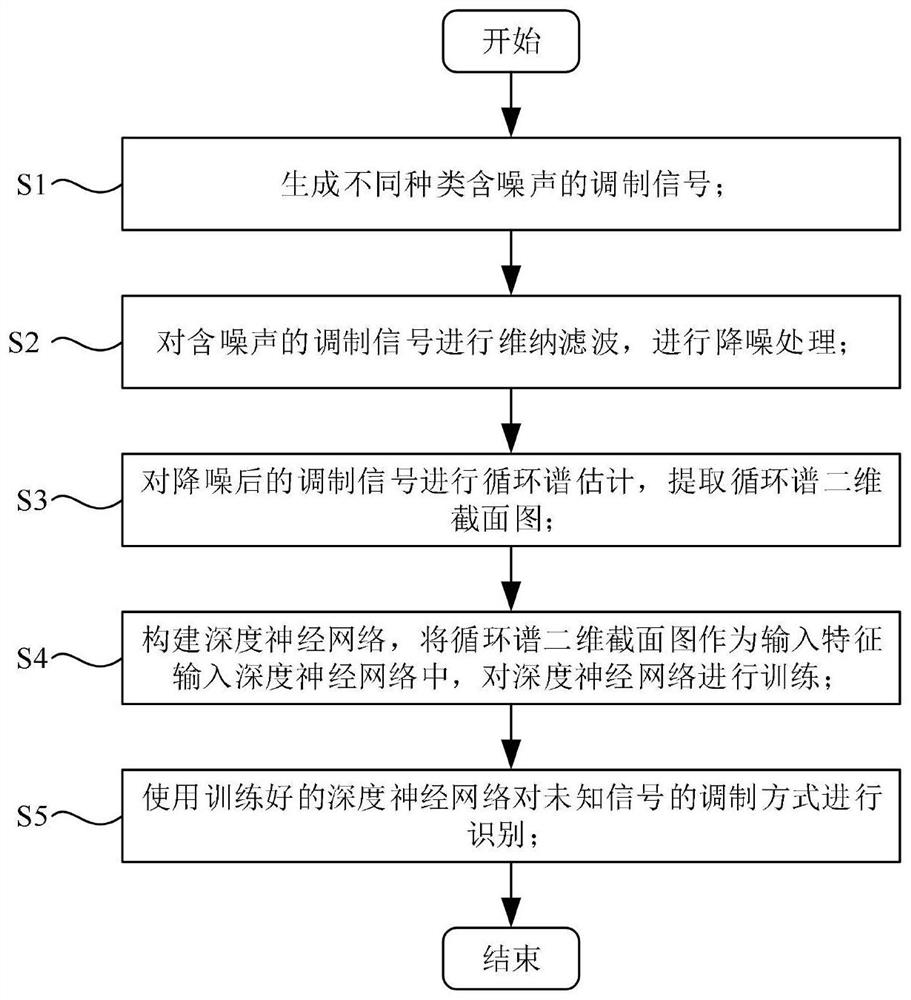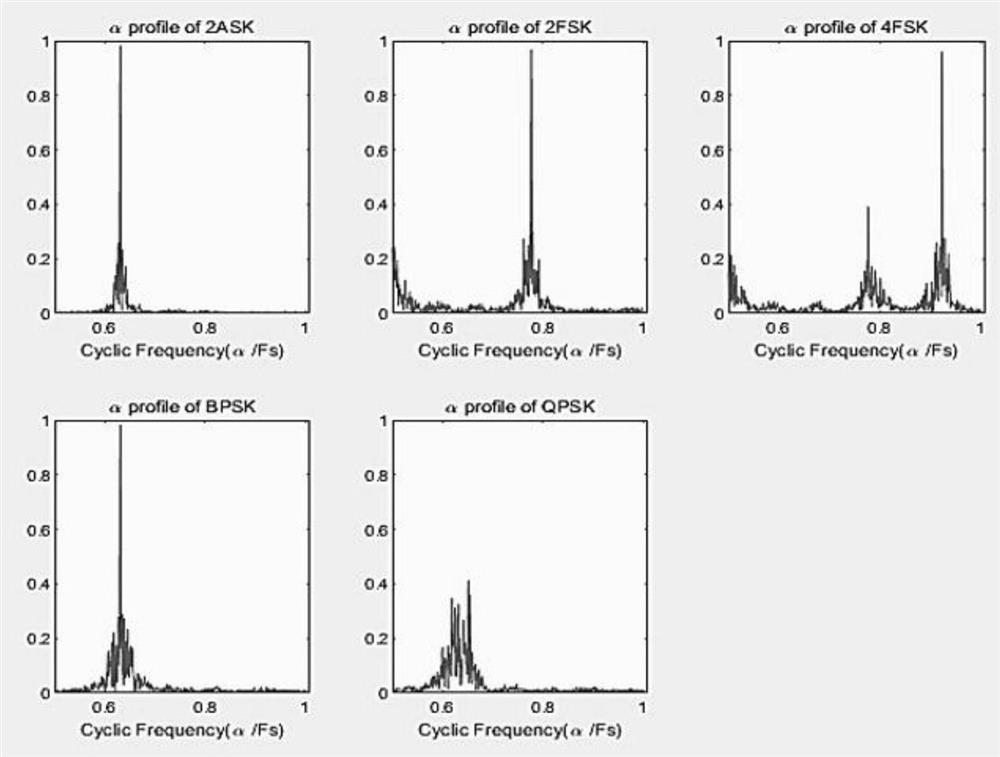Modulation signal identification method and system based on deep learning
A modulated signal and deep learning technology, which is applied in the field of communication technology applications, can solve the problems of reducing the recognition accuracy of modulated signals, large noise influence, and large computational complexity.
- Summary
- Abstract
- Description
- Claims
- Application Information
AI Technical Summary
Problems solved by technology
Method used
Image
Examples
Embodiment 1
[0078] Such as figure 1 As shown, a modulation signal recognition method based on deep learning includes the following steps:
[0079] S1: Generate different types of modulation signals containing noise;
[0080] S2: performing Wiener filtering on the modulated signal containing noise, and performing noise reduction processing;
[0081] S3: Estimating the cyclic spectrum of the modulated signal after noise reduction, and extracting a two-dimensional cross-sectional view of the cyclic spectrum;
[0082] S4: Construct a deep neural network, input the two-dimensional cross-sectional graph of the cyclic spectrum into the deep neural network as an input feature, and train the deep neural network;
[0083] S5: Use the trained deep neural network to identify the modulation mode of the unknown signal.
[0084] In the specific implementation process, this scheme first performs noise reduction processing on the modulated signal through Wiener filtering, which can effectively reduce t...
Embodiment 2
[0116] More specifically, on the basis of Embodiment 1, this solution also provides a modulated signal identification system based on deep learning, which is used to implement a modulated signal identification method based on deep learning, specifically including a noise-containing modulated signal generation module, Wiener filtering module, cyclic spectrum estimation module, neural network building module, neural network training module, identification module; where:
[0117] The noise-containing modulation signal generation module is used to generate different types of noise-containing modulation signals;
[0118] The Wiener filtering module is used to perform Wiener filtering on the noise-containing modulation signal to perform noise reduction processing;
[0119] The cyclic spectrum estimation module is used to perform cyclic spectrum estimation on the modulated signal after noise reduction, and extract a two-dimensional cross-sectional view of the cyclic spectrum;
[012...
PUM
 Login to View More
Login to View More Abstract
Description
Claims
Application Information
 Login to View More
Login to View More - R&D
- Intellectual Property
- Life Sciences
- Materials
- Tech Scout
- Unparalleled Data Quality
- Higher Quality Content
- 60% Fewer Hallucinations
Browse by: Latest US Patents, China's latest patents, Technical Efficacy Thesaurus, Application Domain, Technology Topic, Popular Technical Reports.
© 2025 PatSnap. All rights reserved.Legal|Privacy policy|Modern Slavery Act Transparency Statement|Sitemap|About US| Contact US: help@patsnap.com



